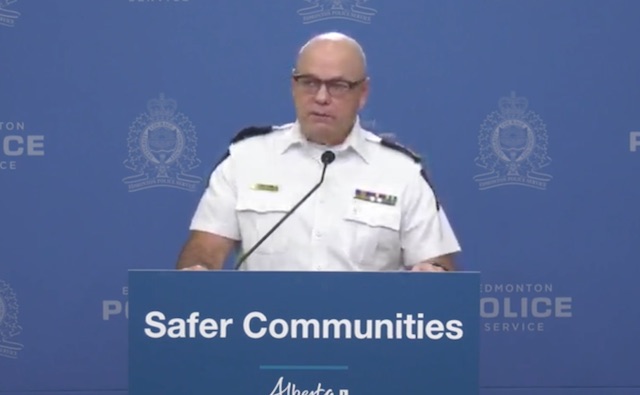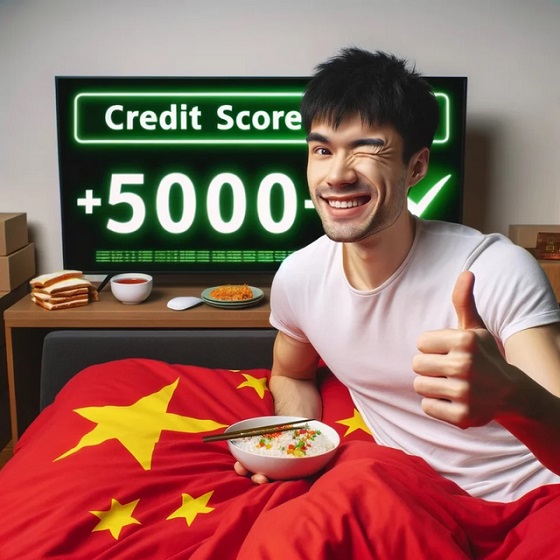Alberta
“We can no longer watch our city decay” EPS Chief Dale McFee on province’s “zero tolerance for crime” initiative

Zero tolerance for crime
New targeted prosecution units and stricter bail protocol will make offenders accountable for their actions and better protect Albertans from violent criminal activity.
Albertans deserve to feel safe and protected from repeat violent offenders, which is why the province is introducing new measures to make sure Albertans feel secure and protected in their communities.
Targeted prosecution units in Alberta’s major urban centres will help address deteriorating safety and keep Albertans safe from those who commit violent crimes. The Alberta Crown Prosecution Service (ACPS) will create teams with expertise to focus on the increased level of crime and the prosecution of violent criminals in Edmonton and Calgary. Prosecutors on these teams will work with law enforcement to focus on specific issues affecting these communities, including drug houses and available social supports, and how these factors affect the amount and type of crime occurring.
“The position of the Alberta government is absolutely clear: there is no safe haven in Alberta for criminals. These changes add to our existing efforts to make sure all criminals, especially repeat violent offenders, are held accountable for their actions.”
Changes to the bail practice protocol for Crown prosecutors will prioritize public safety and take a tough approach on crime caused by repeat violent offenders and gang activity. The protocol provides guidance to prosecutors to seek to detain any accused who is a threat to public safety, especially repeat violent offenders, unless the risk to public safety can be addressed by bail conditions. Prosecutors must evaluate the risk that the accused will commit another offence if released.
In addition, the attorney general is terminating the triage practice protocol, which has been met with public concern since it came into effect in 2017. Eliminating this protocol will better address violent crimes in the community and ensure all viable charges are prosecuted. This change is possible through government investments in the ACPS, which give the prosecutors resources to fully prosecute all matters involving violence.
“In the absence of needed bail reform from the federal government, Alberta is taking a zero-tolerance approach to ensure citizens are safe and secure in their communities. Violence, social disorder and open-air drug use is unacceptable, and we will do everything in our power to take back our streets and ensure they’re safe for Albertans.”
These measures build on several actions Alberta’s government is taking to improve public safety, including increased investments in the Alberta Sheriffs, additional funding to hire 100 more street-level police officers in Edmonton and Calgary, and a $5-million grant to each city to improve public safety on their transit networks.
“The criminal activity and disorder that is happening on our city streets is truly devastating. I am pleased by the changes being proposed by the minister of justice and the new approach of Edmonton Police Service to keep public spaces safe. These interventions are important to stabilize the situation while we continue to work together on long-term solutions.”
“There is no question that Edmontonians are concerned about the condition of their city’s public spaces, with open-air drug use and associated crime and violence a top issue. We have many government and community partners we lean on to support those impacted by mental health, addiction and victimization, and will continue to do so, but the EPS is taking a clear stance on the criminality and disorder being directly fed by the drug trade.”
Together, these initiatives will help strengthen the Alberta justice system and the ability to prosecute crimes and keep repeat violent offenders off the street.
Quick facts
- Investments in the Alberta Crown Prosecution Service include the addition of 50 new trial prosecutor positions since 2017.
- Public concern about the triage practice protocol introduced in 2017 resulted in some prosecutions not proceeding even if they were in the public interest and had a reasonable likelihood of conviction.
- Alberta is providing funding for 100 new front-line police officers in Calgary and Edmonton – 50 in each city.
- The Alberta Transit Cleanup Grant is providing Edmonton and Calgary with $5 million each for initiatives that create a safer, more welcoming environment for transit riders.
- In February 2023, the Alberta Sheriffs entered into an agreement with the Edmonton Police Service (EPS) to deploy 12 sheriffs for a 15-week pilot project to address public safety and social disorder in the downtown core. In response to a request from EPS, 10 sheriffs remain deployed with EPS until the end of the year.
Alberta
Alberta takes big step towards shorter wait times and higher quality health care

From the Fraser Institute
On Monday, the Smith government announced that beginning next year it will change the way it funds surgeries in Alberta. This is a big step towards unlocking the ability of Alberta’s health-care system to provide more, better and faster services for the same or possibly fewer dollars.
To understand the significance of this change, you must understand the consequences of the current (and outdated) approach.
Currently, the Alberta government pays a lump sum of money to hospitals each year. Consequently, hospitals perceive patients as a drain on their budgets. From the hospital’s perspective, there’s little financial incentive to serve more patients, operate more efficiently and provide superior quality services.
Consider what would happen if your local grocery store received a giant bag of money each year to feed people. The number of items would quickly decline to whatever was most convenient for the store to provide. (Have a favourite cereal? Too bad.) Store hours would become less convenient for customers, alongside a general decline in overall service. This type of grocery store, like an Alberta hospital, is actually financially better off (that is, it saves money) if you go elsewhere.
The Smith government plans to flip this entire system on its head, to the benefit of patients and taxpayers. Instead of handing out bags of money each year to providers, the new system—known as “activity-based funding”—will pay health-care providers for each patient they treat, based on the patient’s particular condition and important factors that may add complexity or cost to their care.
This turns patients from a drain on budgets into a source of additional revenue. The result, as has been demonstrated in other universal health-care systems worldwide, is more services delivered using existing health-care infrastructure, lower wait times, improved quality of care, improved access to medical technologies, and less waste.
In other words, Albertans will receive far better value from their health-care system, which is currently among the most expensive in the world. And relief can’t come soon enough—for example, last year in Alberta the median wait time for orthopedic surgeries including hip and knee replacements was 66.8 weeks.
The naysayers argue this approach will undermine the province’s universal system and hurt patients. But by allowing a spectrum of providers to compete for the delivery of quality care, Alberta will follow the lead of other more successful universal health-care systems in countries such as Australia, Germany, the Netherlands and Switzerland and create greater accountability for hospitals and other health-care providers. Taxpayers will get a much better picture of what they’re paying for and how much they pay.
Again, Alberta is not exploring an untested policy. Almost every other developed country with universal health care uses some form of “activity-based funding” for hospital and surgical care. And remember, we already spend more on health care than our counterparts in nearly all of these countries yet endure longer wait times and poorer access to services generally, in part because of how we pay for surgical care.
While the devil is always in the details, and while it’s still possible for the Alberta government to get this wrong, Monday’s announcement is a big step in the right direction. A funding model that puts patients first will get Albertans more of the high-quality health care they already pay for in a timelier fashion. And provide to other provinces an example of bold health-care reform.
Alberta
Alberta’s embrace of activity-based funding is great news for patients

 From the Montreal Economic Institute
From the Montreal Economic Institute
Alberta’s move to fund acute care services through activity-based funding follows best practices internationally, points out an MEI researcher following an announcement made by Premier Danielle Smith earlier today.
“For too long, the way hospitals were funded in Alberta incentivized treating fewer patients, contributing to our long wait times,” explains Krystle Wittevrongel, director of research at the MEI. “International experience has shown that, with the proper funding models in place, health systems become more efficient to the benefit of patients.”
Currently, Alberta’s hospitals are financed under a system called “global budgeting.” This involves allocating a pre-set amount of funding to pay for a specific number of services based on previous years’ budgets.
Under the government’s newly proposed funding system, hospitals receive a fixed payment for each treatment delivered.
An Economic Note published by the MEI last year showed that Quebec’s gradual adoption of activity-based funding led to higher productivity and lower costs in the province’s health system.
Notably, the province observed that the per-procedure cost of MRIs fell by four per cent as the number of procedures performed increased by 22 per cent.
In the radiology and oncology sector, it observed productivity increases of 26 per cent while procedure costs decreased by seven per cent.
“Being able to perform more surgeries, at lower costs, and within shorter timelines is exactly what Alberta’s patients need, and Premier Smith understands that,” continued Mrs. Wittevrongel. “Today’s announcement is a good first step, and we look forward to seeing a successful roll-out once appropriate funding levels per procedure are set.”
The governments expects to roll-out this new funding model for select procedures starting in 2026.
* * *
The MEI is an independent public policy think tank with offices in Montreal, Ottawa, and Calgary. Through its publications, media appearances, and advisory services to policymakers, the MEI stimulates public policy debate and reforms based on sound economics and entrepreneurship.
-

 2025 Federal Election22 hours ago
2025 Federal Election22 hours agoResearchers Link China’s Intelligence and Elite Influence Arms to B.C. Government, Liberal Party, and Trudeau-Appointed Senator
-

 2025 Federal Election2 days ago
2025 Federal Election2 days agoCommunist China helped boost Mark Carney’s image on social media, election watchdog reports
-

 2025 Federal Election1 day ago
2025 Federal Election1 day agoRCMP memo warns of Chinese interference on Canadian university campuses to affect election
-

 2025 Federal Election2 days ago
2025 Federal Election2 days agoFifty Shades of Mark Carney
-

 Alberta2 days ago
Alberta2 days agoAlberta takes big step towards shorter wait times and higher quality health care
-

 Energy2 days ago
Energy2 days agoTrump signs four executive orders promoting coal industry
-

 COVID-1920 hours ago
COVID-1920 hours agoFauci, top COVID officials have criminal referral requests filed against them in 7 states
-

 2025 Federal Election2 days ago
2025 Federal Election2 days agoConservative Party urges investigation into Carney plan to spend $1 billion on heat pumps










